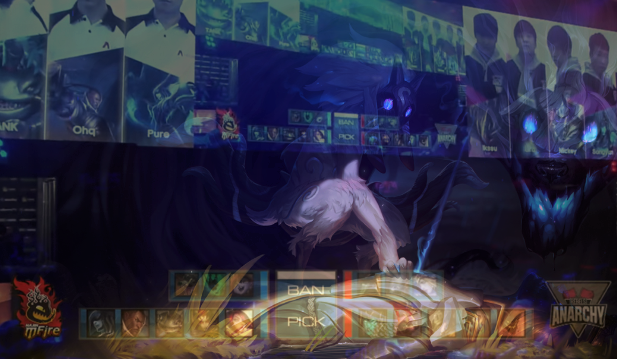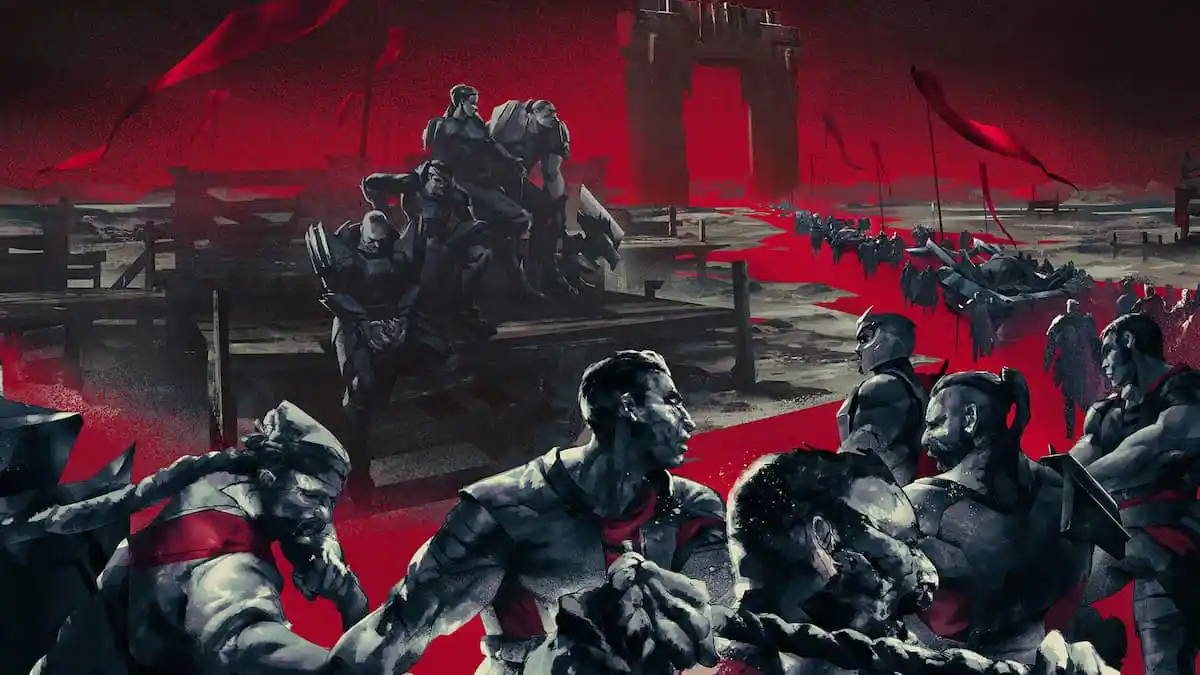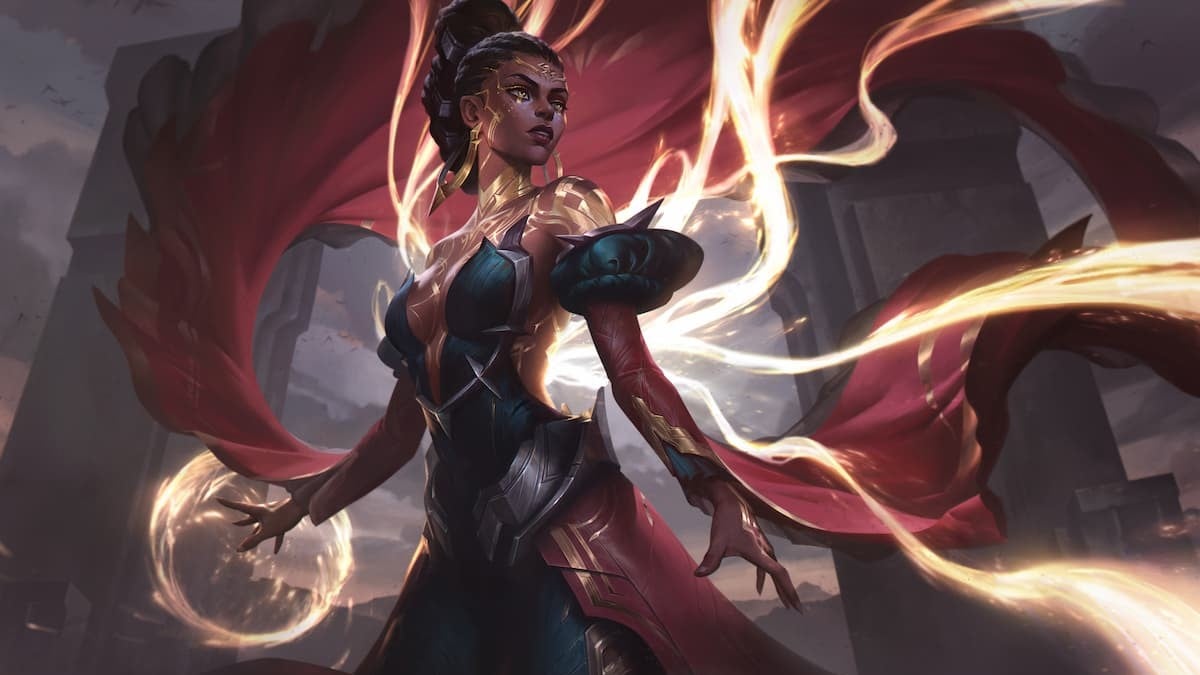(Author’s note: this is not a guide on how to play Kindred, rather analysis on Kindred’s ideal role and usage in the professional scene based on the KESPA Cup games thus far.)

While many of us are languishing about roster changes and the selling and acquisition of various teams, a more notable change has been affecting the KESPA Cup currently taking place in Korea. Being picked or banned in the majority of games, Kindred, the new jungle champion released in patch 5.20, has been effective in nearly every game that it’s been a part of. While the professional players using this new champion in solo que have been free agent Spirit and Team Liquid’s IWillDominate, we had yet to see Kindred see play professionally as Worlds remained on the 5.16 patch for the duration of the tournament.
Fast forward five patches, and suddenly Kindred is an extremely high priority champion. It’s been fairly well established how much of a terror in solo que that Kindred can be, as Kindred is the most banned jungler worldwide at a 55.7% rate. However, with the likes of elite junglers such Elise, Rek’Sai, and Gragas reigning over the professional scene due to their utility and/or ability to tank damage, it remained seen to see how Kindred would fit in among its contemporaries. Kindred’s skillset is that of an AD Carry rather than of what is typically expected of junglers. Will teams need to play around their own Kindred to ensure success, making Kindred, in one sense, the “Mordekaiser of the jungle?”

This question was answered with a resounding “no” this weekend as Korean teams utilized Kindred for great success for games. However, any team can simply use a champion and win with it. Well, at least SK Telecom can. What signifies how thoroughly a team understands the power of a champion comes in how the champion is used, rather than by simply winning or losing with it. Thankfully, we are quickly learning what Kindred can bring to teams. While Lira hard-carried Anarchy to a victory over Najin racking up a 10-4-10 score on Kindred, elsewhere the Jin Air Green Wings rounded out the best-looking “Juggermaw” team composition with Winged delivering an outstanding performance playing as Kindred. Looking into these games, we are able to get a better grasp and understanding on what Kindred brings to a professional game.
Najin vs. Anarchy, Game 1– Kindred, the Hard Carry

In the first professional Kindred game, Lira, often criticized for his lesser play and jungle pathing compared to his Korean contemporaries, absolutely dominates Najin. Compiling a 10-4-10 score on Kindred, Lira crushes Najin and punishes them throughout the game as he utilizes every aspect of Kindred’s kit.
At 4:50, he and Ikssu end up in a two versus two skirmish in bot lane against Duke and Peanut. Despite Ikssu being taken to critically low health early on in the battle, nearly the entire fight occurs within the radius of Kindred’s W. As Wolf prances about doing additional damage to Lira’s targets, Ikssu bolts for the nearby bush. Tank attempts to teleport in, but a gold card from Mickey, Anarchy’s prodigy middle lane talent, cancels the play. Lira ends up being able to finish both Duke and Peanut off, and suddenly a seemingly free kill for Najin turned into a two for none in favor of Anarchy.
From this point on, Lira realizes the power that he currently has, purchasing two longswords, some wards, and the blue Chilling Smite in his first back. In picking the blue smite, Lira is telegraphing that he plans on translating his advantage into ganks, with the slow and damage from Chilling Smite helping Kindred to close the gap between Lira and his prey. Although he ironically does not have smite off of cooldown when doing so, around 7:44 he returns to the solo lane of Ikssu versus Duke and comes away with yet another kill. 3-0-0 at 8:12, the game is Lira’s to shape. Aware of how in control he is, Lira purchases a Hexdrinker after he completes his Warrior Enchantment, because the only way that Anarchy can lose a team fight is if either Lira gets bursted down before he can use his ultimate, or Lira simply is not at the fight.
The next major team fight involving Lira really demonstrates Kindred’s full power in five versus five combat. At 14:07 Kindred initiates onto the Najin bottom lane, and as teleports come in from both sides, it quickly becomes a chaotic full-on fray under Najin’s tier 1 bottom turret. Taking heavy damage from the turret, Lira activates his ultimate as he continues to dance around the Najin team, dishing out heavy damage. What seemed like a masterful flank from Najin quickly goes sour, and although Lira falls in the end, he is the only one on his team to perish as the rest of the Anarchy lineup picks up three kills. Furthermore, as Fiora placed her Grand Challenge on Kindred, Lira’s ultimate allowed for Kindred to delay Grand Challenge’s activation until he dashes away from the team fight, where the ultimate is rendered irrelevant.
The power of Kindred’s ultimate, Lamb’s Respute, is showcased during the rest of the game, as Lira executes multiple tower dives in team fights with Kindred’s power. Performing as the Anarchy primary carry, Lira easily manages to pick up the first game of Anarchy’s set over Najin thanks to Kindred’s ability to carry. Whereas it’s not exactly a good thing for other jungler champions to receive kills early in the game, the snowball carry potential that comes with Kindred means that, regardless of who picks up kills, Lira is helping his team win in an efficient manner by taking his team’s early kills.
Longzhu-IM vs. Jin Air Green Wings, Game 3– Kindred, the World’s Greatest Backup Plan

Make no mistake, Winged absolutely carried the Jin Air Green Wings to victory in Game 3 of this set versus IM, but his Kindred was in no way the focus of this composition. Rather, Kindred is the secondary threat in a classic “Juggermaw” composition. For anyone unaware of the term, “Juggermaw” refers to a strategy developed by the GE Tigers designed to pump as much damage out as possible while being simultaneously nearly indestructible. This revolves around protection of the Kog’Maw, usually consisting of a disengage support and a Lulu in a solo lane. However, having a Kog’Maw as the solo threat on a team usually would not work out well. Ironically, with a tanky top laner, such as Maokai during the Juggermaw’s heyday, the Kog’Maw would be less protected primarily because the opposing team would be able to funnel all of their resources and abilities into eliminating the Kog’Maw. In this game, Jin Air does the same, taking Shen for their top lane, Lulu for the middle lane, and Alistar as their support. Taking Kindred in the jungle enables Jin Air to still take the tanky Shen up top while providing a damage threat out of the jungle, a role which Winged takes head on.
As the game begin, Winged does make an odd decision to poke Tusin before minions spawn, leveling his Q first. This is not ideal, as Kindred’s W gives significantly more sustain and damage for the first clear. As opposed to Lira’s Kindred build, Winged makes the decision to pick up Ranger’s Tailblazer and the purple smite instead of the blue chilling smite. This choice will no longer be available soon as purple smite will shortly be removed in patch 5.22, but the decision behind this lies in Winged wanting to always join the fray. While Kindred already has a quick clear time after gaining only a couple of levels, the purple smite lets Winged counter jungle quicker, and more importantly, clear his passive marks before he is caught by the opposing team. Essentially, taking the purple smite further reinforces Kindred’s objective control, as Kindred’s marked jungle camps are really treated as in-game objectives by these junglers. Instead of a gank-heavy style of play, Winged opts to power jungle for an advantage, using the purple smite to help demolish the jungle. At 13 minutes into the game, Kindred already has 59 CS compared to Tusin’s Elise, which has 41. Kindred and Kog’Maw then shortly after absolutely shred the dragon’s health bar down in under seven seconds.
Just as how gangs may “tag” a certain section of a city to mark it as their territory and a danger for rivals entering it, the marked enemy jungle camps of Kindred essentially become warning messages to Tusan as not to stray near them. As Winged freely farmed his marks early on, the dueling threat that Kindred brings wherever Winged roams acts as an aura of deterrence. IM cannot simply send one member to deal with Kindred, or else Winged will just outduel whichever unlucky soul was shipped to the Eastern Front of Summoner’s Rift. Because of the focus on power jungling, Kindred simply has so much more gold in comparison to what one would expect of a jungler at this point in time.
In a team fight beginning at 21:20, we see the true power of having essentially a second AD Carry in this Juggermaw composition. At the beginning of the fight, Winged takes the dragon as IM are held off in the top of the river. Winged then jumps over the dragon wall into the IM jungle, setting himself up for a flank on IM. However, Expression catches him out, and immediately ults him. Kusan on Lulu then immediately goes in to support Winged, expending Wild Growth on him and buffing Kindred up. In the same way that Kog’Maw benefits from this style of composition, the Kindred can just as easily be the recipient of Lulu’s buffs. In this scenario, the Kindred is actually pumping out more damage than the Kog’Maw anyways, so it makes the most sense to keep the Kindred alive. This luxury of two AD Carries means that Jin Air can opt as to which one becomes the juggernaut, and which one serves as the secondary threat. Should one die early on, which shouldn’t happen anyways with Kindred’s ultimate, the other can simply be buffed up and there’s no major loss. Secondly, during the duration of Kindred’s ultimate, either carry that gets focused can simply wait out Lulu and Alistar’s cooldowns before re-entering the fray.
Out of all the Kindred team compositions that have been played thus far, this composition clearly had all of the elements to utilize Kindred the best. After looking at two convincing wins with Kindred, it would of course take SK Telecom to hand the first competitive loss to Kindred.
SBENU SonicBoom vs. SK Telecom, Game 3 – Kindred, another Champion SK Telecom Can Beat

SK Telecom runs rampant through this game despite Sbenu assembling a similar team composition to Jin Air in the previous game we looked at. The only difference in champion select is that Sbenu opts to take the Tristana instead of the Kog’Maw at AD Carry. While in the last match we saw what can happen when Kindred is in the perfect team composition, this game demonstrates how Flawless, performing on Kindred, is perfectly countered, although really all that SK Telecom had to do was pick Gragas.
It’s quite clear on how one can counter Kindred: move the opposing Kindred out of their ultimate. No other champion in the game is as effective at displacing opponents as Gragas, simply needing to toss a barrel to negate Kindred’s ultimate. The other two top tier junglers, Elise and Rek’Sai, are unable to move opponents. Looking down the line, Skarner could use his ultimate on Kindred, but first he would have to somehow catch the mobile champion. Xin Zhao could theoretically knock Kindred out of Lamb’s Respite, but there would need to be another enemy target nearby that he could use his ultimate on. Furthermore, this additional champion would need to be placed perfectly to knock Kindred in the desired direction. Finally, Lee Sin could “Insec” Kindred out, but such a method lacks reliability.
With the power of Gragas, SK Telecom are constantly able to render the opposing Kindred useless. Flawless finds himself being constantly countered and is far too passive in hunting his passive stacks. Quickly falling behind the other Kindred players thus far, the damage output for Flawless, while still large, is unable to overcome his comparative deficit. Gragas is able to apply immense pressure on Flawless, knowing that running into Gragas could likely mean his demise, although this is admittedly also in part to the alarming difference in Sbenu’s vision control in comparison to SK Telecom. In stark contrast to his contemporaries, Flawless finishes the game with a pedestrian 2-3-0 score as his own nexus explodes.
What Can We Expect in the Future?
First and foremost, let’s address pick/ban. If Kindred is left open, it’s a near guarantee that it will be picked up quickly. The overpowering kit of Kindred and the fact that lower-tier LCK junglers have been able to perform as Kindred lend me to believe that Kindred will quickly become a red-side ban. However, the catch will be Gragas, as teams may hesitate to pick Kindred if Gragas is still available to be taken. A Gragas ban blue side would highly suggest an incoming Kindred first-pick, and accordingly should be banned away by red side.
Considering the options available with Lulu, we should see many more Juggermaw-style compositions arising with Kindred played in the jungle. There are simply so many synergies between Kindred, a late-game scaling AD Carry, and Lulu. In a far-too-early prediction, I would expect such compositions, swapping Kog’Maw amongst Tristana and Jinx, will become the norm at the upcoming IEM San Jose tournament if Lulu and Kindred escape the ban phase. The other way to stop this is of course by banning Lulu away in champion select or forcing a Kindred for Lulu trade in the first rotation of picks, but that still gives one team Kindred.

Kindred’s hard counter, Gragas
Honestly, although Gragas offers some deterrence potential, Kindred will likely be banned in most upcoming matches at IEM San Jose. The most likely scenario in which we see Kindred is later on in a series when there become targeted champions from earlier games that get banned away.
Should Kindred make it into a game, be prepared for it to be the only time Kindred appears on Summoner’s Rift all day. With a kit packed full of damage, mobility, objective control, dueling power, and utility, Kindred will take over a game before the batting of an eye. Really, look at those five strengths. For all of that, Kindred’s one weakness is being squishy, which, in practice, is negated by Kindred’s ultimate ability. What more could one want out of a jungler?
If you enjoy this content, you can follow Xmeik on Twitter (@lolXmeik) for updates on future articles. For more of “Xmeik’s Wednesday Long Read” series, be sure to check out articles from previous weeks:
November 4th, 2015: SKT vs. KOO and the Anatomy of a Lane Swap
October 29th, 2015: Comparing Marin, Smeb, and Ssumday
Photo and video credit to: lolesports, leagueoflegends.com, ESportsTV






Published: Nov 11, 2015 11:55 am